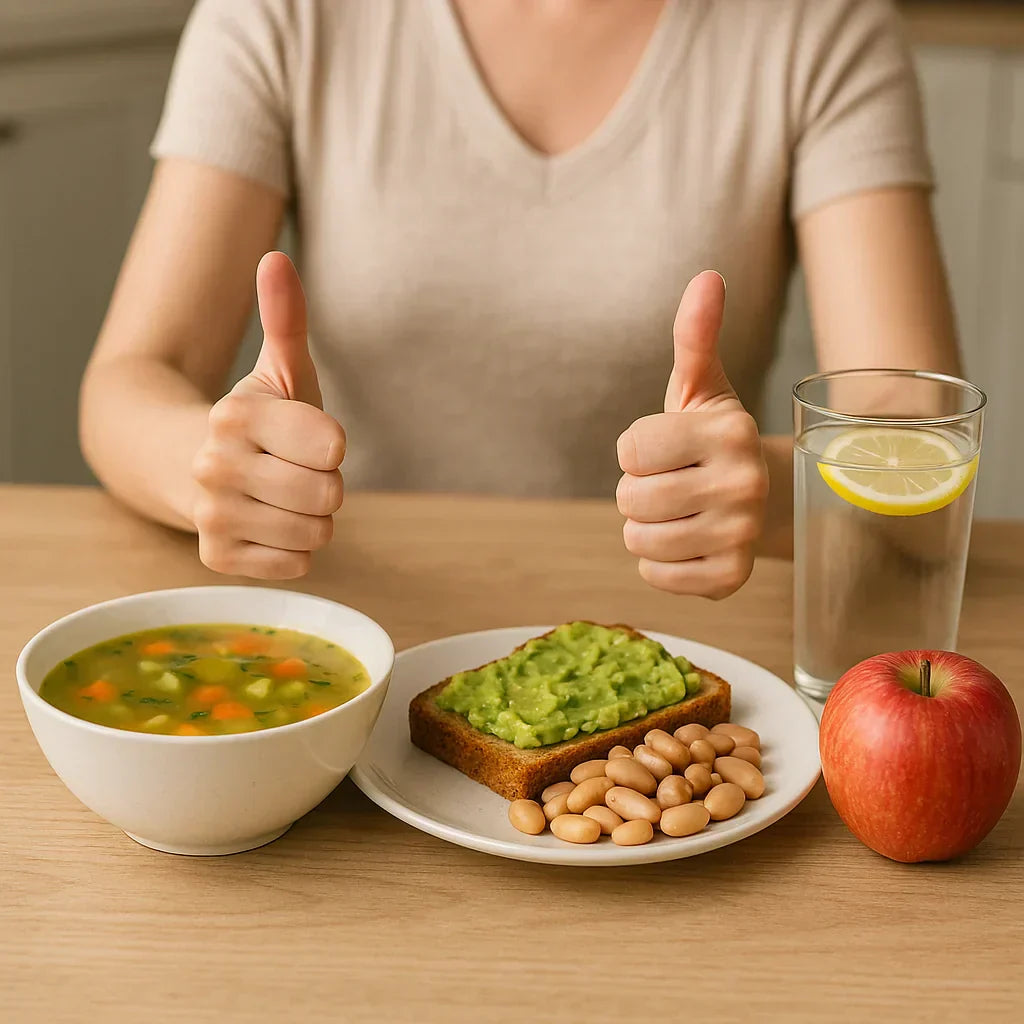Gut Health and GLP-1: Why a Healthy Gut Means Easier Weight Loss

Could the secret to weight loss lie in your gut? An unhealthy gut can stall your progress, while a balanced microbiome can boost GLP-1 and metabolism. Learn why gut health is key to weight loss and how to nurture your inner ecosystem.
We often think of digestion as simply breaking down food, but your gut is so much more – it’s a “second brain” and a hormone factory. Inside your intestines live trillions of bacteria (your microbiome) that actively interact with what you eat and even influence your hunger and metabolism. One fascinating way they do this is by affecting GLP-1 production. A healthy gut can actually help release more GLP-1 after meals, naturally curbing appetite. Plus, your gut health influences inflammation, insulin sensitivity, and how many calories you extract from food. So if you’re doing “everything right” for weight loss but still stuck, your gut might hold the missing piece.

How Gut Health Impacts GLP-1 and Weight
Microbes and Short-Chain Fatty Acids (SCFAs): When good gut bacteria ferment fiber (think of fiber as their food), they produce SCFAs like butyrate and propionate. These SCFAs have multiple benefits: they improve the health of your gut lining, reduce inflammation, and importantly, they stimulate the intestinal cells to release GLP-1 and PYY (another satiety hormone). Essentially, a fiber-rich diet leads to a happy microbiome, which then sends signals (via SCFAs) that help you feel full and regulate blood sugar. If your diet is low in fiber or your gut bugs are out of balance, you might be missing out on this natural GLP-1 boost.
-
Dysbiosis and Cravings: Dysbiosis means an imbalance of gut bacteria (maybe too many “unhelpful” bacteria, not enough of the good guys). Certain bad bacteria strains are thought to increase cravings for sugary, fatty foods – they literally “ask” you to feed them their preferred fuel. They can also produce lipopolysaccharides (LPS) that trigger inflammation. Inflammation can interfere with insulin signaling, potentially making weight loss harder. Plus, if your gut is inflamed or leaky (leaky gut syndrome), you might experience bloating, discomfort, or fatigue, which doesn’t exactly make one enthusiastic to hit the gym or cook a healthy meal.
-
Calorie Extraction: Amazingly, different people’s guts extract different calories from the same food. Some microbes are very efficient at breaking down food and may cause you to absorb more calories, whereas others waste some calories. Studies with identical twins have shown the twin with more diverse or balanced gut flora tends to be leaner, possibly because their microbiome helps regulate energy balance better. While you can’t exactly change your calories with a snap, improving gut health could subtly shift metabolism in your favor.
Steps to a Gut-Friendly, Slimming Diet
1. Load Up on Diverse Fiber: Aim for a variety of fiber sources – fruits, vegetables, whole grains, legumes, nuts, seeds. The diversity is key because different fibers feed different beneficial bacteria. A fun challenge: try to eat 30 different plant-based foods in a week. This could include herbs and spices too. A diverse microbiome is linked to better weight management. More fiber also means more SCFAs, hence more GLP-1 release to keep you satiated.
2. Probiotics & Fermented Foods: Incorporating fermented foods like yogurt, kefir, sauerkraut, kimchi, kombucha, or miso can introduce friendly bacteria and support microbiome diversity. There’s evidence that certain probiotic strains (like Lactobacillus and Bifidobacterium species) can assist with weight regulation and reduce inflammation. You can also consider a quality probiotic supplement, but whole foods are a great start. For instance, a daily bowl of yogurt with berries and flaxseeds is a trifecta: probiotics + fiber + polyphenols to feed good microbes.
3. Polyphenols – Microbe Superfood: Polyphenols are compounds in colorful fruits, veggies, tea, coffee, and dark chocolate. Human cells don’t absorb polyphenols well – but your gut bacteria love them. As microbes metabolize polyphenols, they produce beneficial byproducts that can aid metabolism. Green tea, for example, contains catechins that gut bugs transform, helping with fat oxidation. Berries, red cabbage, and even spices like turmeric have polyphenols that act as microbial boosters. So “eat the rainbow” isn’t just a slogan – it’s microbiome therapy.
4. Cut Back on Microbiome Disruptors: Sugar-heavy diets, frequent antibiotics, and low-fiber processed foods can hurt microbiome diversity. Try reducing added sugars and ultra-processed snacks; not only do they add calories, they feed less-friendly bacteria and yeast (like Candida) that can upset gut balance. If you need antibiotics for an illness, that’s fine – just remember to consciously rebuild your flora afterward with probiotics and fiber. Also, be mindful of artificial sweeteners: some studies suggest they might negatively alter gut bacteria in ways that could affect blood sugar control. Moderation is key.
Non-Diet Gut Boosters
-
Exercise: Believe it or not, exercise has been shown to increase gut bacterial diversity. Another win-win: a brisk walk or workout can literally stimulate your gut muscles and improve motility (how things move through), preventing constipation.
-
Stress Management: Your gut lining and bacteria are eavesdropping on your stress hormones. High stress can alter gut motility and secretions in a way that disturbs flora. Practices like meditation, deep breathing, or yoga can help maintain a healthy gut-brain axis. Many people notice an upset stomach when stressed – that’s the gut-brain connection at work.
-
Sleep: Poor sleep can negatively change the microbiome (yes, even our microbes have a circadian rhythm!). So prioritize sleep as part of your weight loss and gut health strategy.
Easier Weight Loss Through a Healthy Gut
When your gut is in good shape, you’re likely to experience better digestion, less bloating, more regular bowel movements, fewer crazy cravings, and improved energy. All these make it easier to stick to a healthy eating plan and active lifestyle. It’s a virtuous cycle: eating well feeds your microbes, and your microbes then help signal your body to maintain a healthy weight.
Many women find that focusing on gut health – something they maybe never linked to weight before – finally helps break a plateau. It’s not just about what you eat, but also about what your gut bacteria do with what you eat. By being a good host to your microbiome, you enlist a powerful ally in your weight loss journey. That’s why gut health features prominently in the Beyond GLP-1 approach: it’s a foundational element that connects to appetite hormones, metabolism, and overall vitality. So, trust your gut (feeling) on this – a healthier inside can reflect on the outside in amazing ways.




